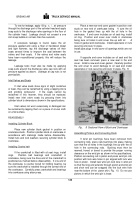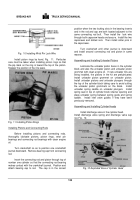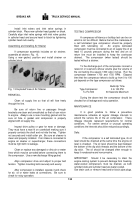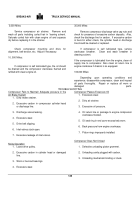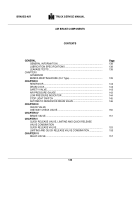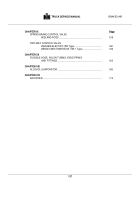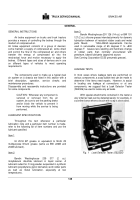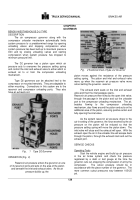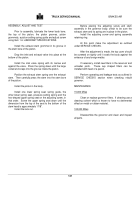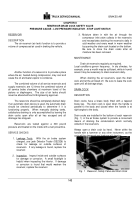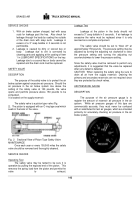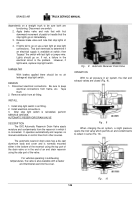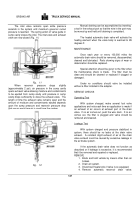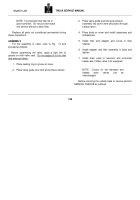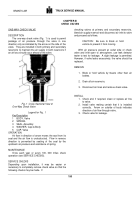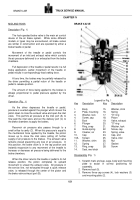TM-5-3805-254-14-P-2 - Page 144 of 894
TRUCK SERVICE MANUAL
BRAKES-AIR
CHAPTER II
RESERVOIR DRAIN COCK SAFETY VALVE
PRESSURE GAUGE - LOW PRESSURE INDICATOR - STOP LIGHT SWITCH
RESERVOIR
DESCRIPTION
The air reservoir (air tank) function is to provide a
volume of compressed air used in braking the vehicle.
Another function of a reservoir is to provide a place
where the air, heated during compression, may cool and
cause the oil and water vapors to condense.
The combined volume of all service reservoirs and
supply reservoirs are 12 times the combined volume of
all service brake chambers at maximum travel of the
pistons or diaphragms.
The size of air tanks should
never be altered without IH Engineering approval.
The reservoirs should be completely drained daily.
If an automatic drain device is used, the automatic drain
should be checked periodically to determine if it is
functioning properly.
When manually draining tanks,
satisfactory draining is only accomplished by leaving the
drain cocks open after all air has escaped and all
drainage has stopped.
Reservoirs are tested against a 300 pound
pressure and treated on the inside with a rust preventive.
SERVICE CHECKS
1
.
Leakage Tests. With the air brake system
charged, use Leak Detector Tester (SE2326) to
check for leakage on outside surfaces of
reservoirs.
If any leakage is found, replace the
reservoir.
2
.
Inspection.
Inspect inside and outside surfaces
for damage or corrosion.
A small flashlight is
helpful when inspecting the interior.
If damage
or corrosion is found that would weaken the
reservoir, replace the reservoir.
3
.
Moisture taken in with the air through the
compressor inlet valve collects in the reservoirs
and necessitates draining the reservoirs daily in
cold weather and every week in warm weather
by opening the drain cock located on the bottom.
Be sure to close the drain cocks after all
moisture has been removed.
MAINTENANCE
Drain air reservoirs regularly as required.
Local conditions govern frequency.
In dry climates, for
example, once a month may be sufficient, while in humid
areas it may be necessary to drain reservoirs daily.
When draining the air reservoirs, open the drain
cock and let the air bleed off.
Be sure to leave the cock
open until all drainage stops.
DRAIN COCK
DESCRIPTION
Drain cocks have a brass body fitted with a tapered
brass key.
The drain cock is open when the handle is
parallel to the body and closed when the handle is at
right angles to the body.
Drain cocks are installed in the bottom of each reservoir
(Fig.
1) in the air brake system to provide a convenient
means of draining the condensation which normally
collects in the reservoirs.
Always open a drain cock by hand.
Never strike the
handle with a hammer or any other instrument, as the
cock will be damaged and leakage will develop.
Back to Top

